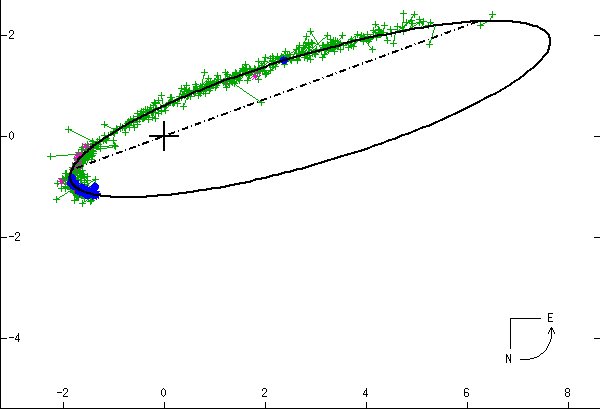
 |
The components of Mu Cygni, the "lovely double star," mutually orbit every 789 years, averaging a distance between them of 118 Astronomical Units, which does not mean all that much since the high eccentricity (0.66) takes them between 40 and 196 AU apart. While the two actually go around a common center of mass that lies between them, it's mathematically simpler to graph the fainter member, Mu-2 Cygni, as going around the brighter, Mu-1, which lies at the cross. The major axis of the true orbital ellipse, given by the dot-dash line, is offset from that of the observed ellipse because of the 76-degree orbital tilt and the orientation to the plane of the sky. The direction of motion is shown at the lower right corner. Note that the most recent modern observations (in blue) are much more accurate than the earlier ones obtained by traditional means. (W. I. Hartkopf and B. D. Mason, Sixth Catalog of Orbits of Visual Binary Stars, US Naval Observatory Double Star Catalog, 2006.) |